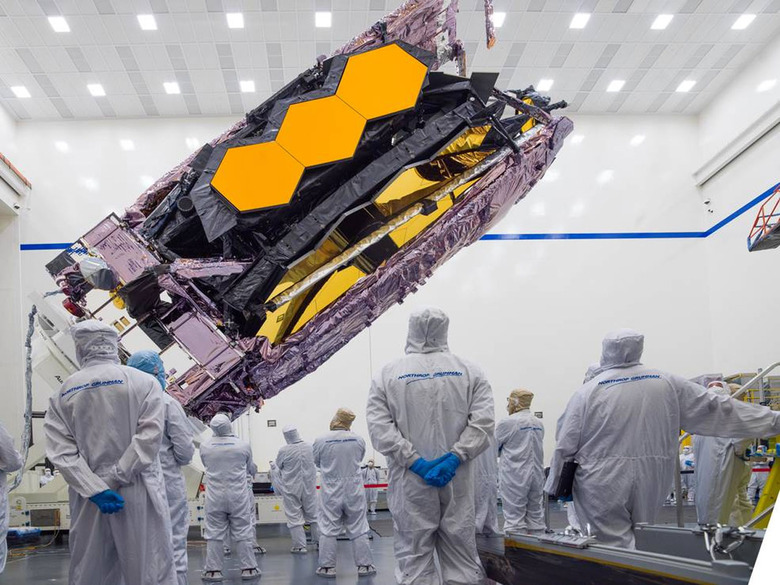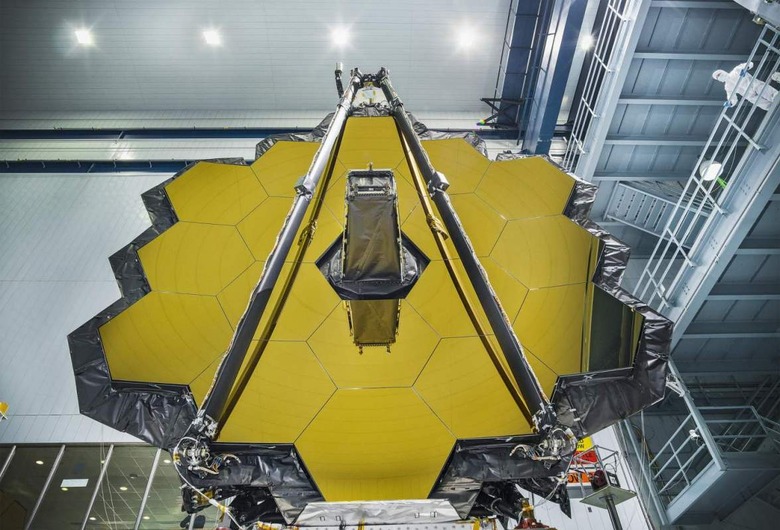NASA outlines the path to launch for the James Webb Space Telescope
One of the most exciting missions that NASA has launched in recent memory is the James Webb Space Telescope. The telescope is finished and has been transported to its launch location in French Guiana. The telescope made the arduous trek by water and is currently scheduled to launch later this year.
Ahead of the launch, a significant amount of preparations had to be made before the telescope could get to work. NASA currently expects the preparations the last 55 days from its arrival to its launch date. Webb initially arrived at the Arianespace cleanroom facilities, where it was inspected to ensure that it was clean and contaminant-free. The journey from its construction location to its launch location was 5800 miles.
Engineering teams conducted a final set of electrical and functional tests for the telescope. They were able to ensure the stowed mechanical configuration of the telescope would allow it to deploy correctly once in orbit. After those checks were completed, a special team began to load Webb with its fuel, consisting of hydrazine and nitrogen tetroxide. That combination of fuels will power the rocket thrusters allowing the telescope to maintain orbit.

Once fueled, Webb will head to the vehicle integration building to be mounted atop the Ariane 5 rocket. Once integrated onto the rocket, technicians and engineers will remove all of the red tags indicating remove before the flight and add any green tagged items indicating components needing to be installed before the flight. Once those steps are complete, the rocket fairing protecting the payload during launch will be locked into place.
Once the rocket fairing is locked into place, Webb will be ready to launch into orbit. The launch is happening from the Europe Spaceport, which is also known as the Guiana Space Center. Once the integration work is complete, the rocket will be moved to the launchpad a few days before the scheduled liftoff. All electrical connections allowing the rocket to be controlled from the control room will be connected via the umbilical that separates at liftoff.

NASA says about an hour before the rocket is scheduled to launch, it will be switched from external power to onboard batteries. As of November 2, Webb is about 29 days from launch, and work is ongoing. Once in orbit, the most nerve-racking part of the project will commence. Webb has to unfold and lock into its final configuration, or all the work spanning to the beginning maybe for nothing.
Once in orbit, the space telescope will have traveled almost a million miles from Earth to begin looking into the cosmos. NASA is also talking about the timescale of when things will happen after launch. 206 seconds after liftoff, the rocket will be around 75 miles above the planet's atmosphere, and the rocket's fairing will separate. That will expose Webb to space for the first time.
About 28 minutes after launch, the telescope will separate from the rocket, and around 31 to 33 minutes after launch, the solar panels will extend to stop drain on its battery. The solar panels will provide around two kilowatts of power to the onboard battery systems. About two hours after launch, NASA will deploy the onboard medium and high gain antenna platform to establish communications with Earth. Approximately 12.5 hours after launch, the telescope will fire its thrusters. Approximately three days from launch, the telescope's sun shield will unfold, allowing the continued expansion of the observatory. That will be the first step of all major deployments and should take about five hours. Four days after launch, the deployable tower extends to separate the telescope mirrors instruments from the spacecraft.
The process to deploy all 18 primary mirror segments will take approximately ten days, ending on the 25th-day after launch. Finally, on the 29th-day post-launch, thrusters will fire to place Webb into its final orbit marking the end of one of the most complicated deployment sequences ever attempted.
